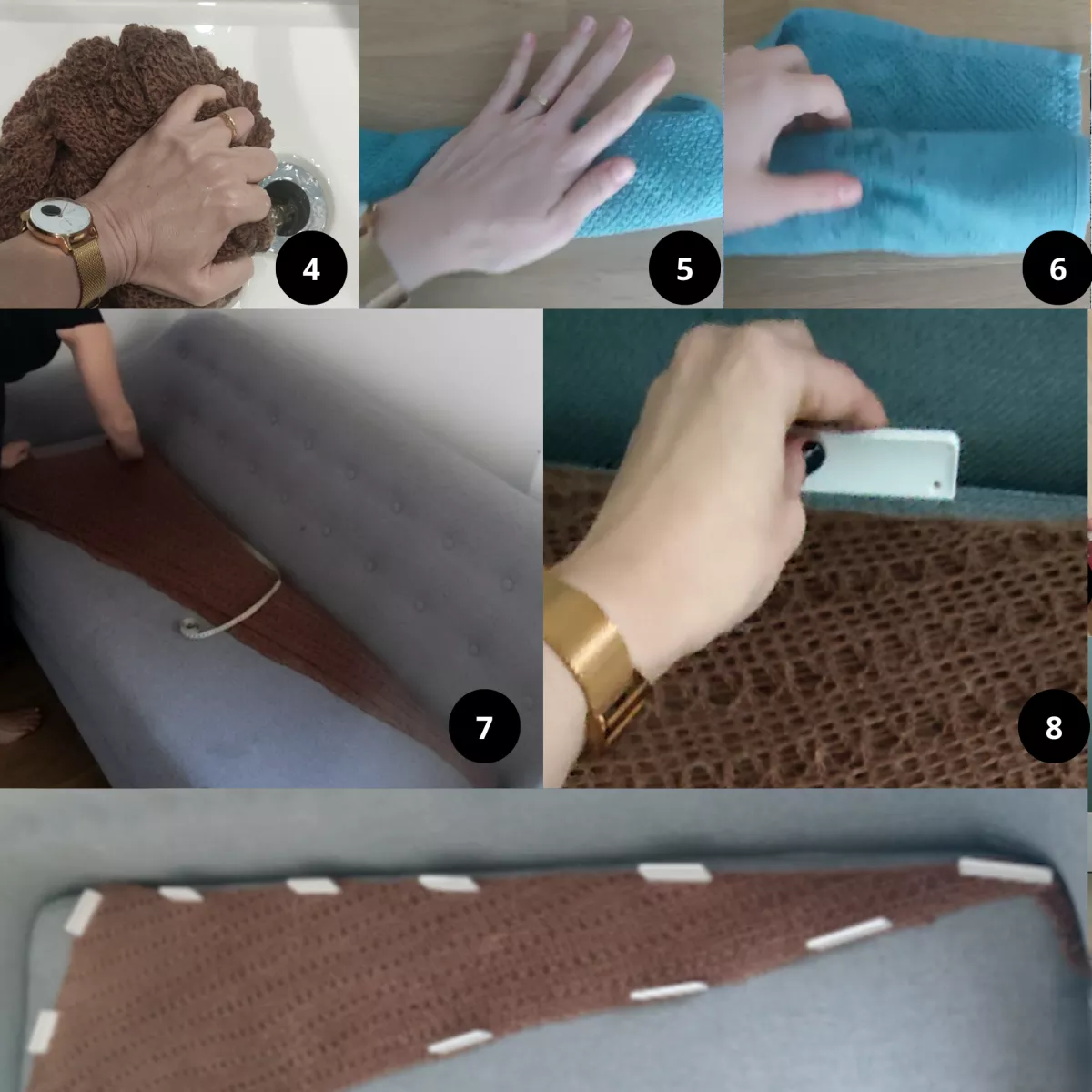What's That?
What is blocking?
It's a method that involves soaking your knitting in water and then letting it dry. But you might ask, why call it blocking and not just washing?
The reason is that, in fact, we let the project dry flat, making sure that all parts are in the correct dimensions. To achieve this, we secure them with pins, combs, or a specific support to ensure they don't move.
The Point
If this method is widely used by knitters, it's because it offers several advantages:
- As the name suggests, it primarily serves to block the work. This prevents it from stretching over time and losing its shape, especially with soft fibers like alpaca.
- It also allows for rectifying errors, providing more consistency to the work, ensuring a straight drape of the stitches.
- Additionally, it helps eliminate spinning grease or any potential unpleasant odors.
- It also aids in breaking the stiffness of fibers and adding flexibility to the material and might help gaining a few centimeters in length or width. .
However, there are also some less positive aspects:
- This step is often overlooked or considered tedious because it requires time, and one must wait for the complete drying before being able to wear the finished project.
- It's a meticulous task, especially in checking the dimensions, and if not done carefully, the work may come out deformed.
- In the case of soft materials or oversized designs, blocking tends to cause some stretching. If you've knitted too loosely, there's a risk of an overly saggy appearance. It's advisable to knit smaller in such cases to anticipate this stretching.
While blocking is not mandatory, it's essential to keep in mind that without it, your work may tend to shift or change shape over time.
Shawl or Scarf Blocking
The blocking of shawls and scarves is rather a classic blocking technique with one difference...
These pieces are often long, even very long. One might think that they are merely large rectangles or triangles worked in one piece and that blocking is not complex under these conditions. In reality, this presents two major difficulties compared to blocking a sweater, for example.
The first difficulty is that it is often challenging to carry out a complete flat blocking. It is frequently necessary to fold the work on itself due to a lack of space or a sufficiently large flat surface available.
Moreover, these pieces often feature motifs or textures repeated over long lengths, sometimes even wide widths. Therefore, it requires particular attention to ensure that the verticals and horizontals remain perfectly straight on all dimensions of the work during drying.
Thus, this is a blocking process that requires great precision to achieve perfectly overlapping faces when folding and straight lines that are perfectly adjusted, parallel, and/or perpendicular.
The Method
For your information, if you prefer a more visual guide, the instructions below are also available in a YouTube video on my channel here: https://youtu.be/-KZRQxha2b8
But if you prefer written instructions, here are the detailed steps for blocking a scarf or shawl:
- Prepare a warm water bath in a sink, basin, or any container large enough to accommodate your work.
- Add a little special wool detergent. It's not mandatory, what matters is the water, but it can help remove some odors and dirt.
- Add your scarf or shawl and let it soak for a maximum of 15 minutes. Some recommend between 15 and 30 minutes of soaking, but personally, I only work with natural fibers. As they are more fragile, I prefer to avoid soaking them too much to prevent damage. The essential thing is that your entire work is immersed in water.
- Drain the water and press your scarf or shawl to remove excess water with the flat of your hand. Do not twist as it breaks the fibers! Also, avoid rubbing as it damages the fibers.
- Lay your scarf or shawl flat on a towel or absorbent fabric. Roll it up like a crepe. Press firmly to remove excess water. You can also walk on it but still avoid twisting.
- Unroll the towel.
- Place the work on a flat support such as a yoga mat, blocking mat, or unused couch. Make sure that the sides and any patterns are straight. Don't forget to check that the dimensions are in line with the pattern's standards. If it's too large, fold your shawl or scarf in half widthwise, aligning both sides well. Take the time to adjust everything precisely.
- Position blocking combs or pins when everything is in place.
- Wait for everything to dry, and you're done!
There you go, you have a beautiful blocked shawl or scarf, ready to accompany you on all your cold weather adventures!
Don't forget to tag me on Instagram, Facebook, or TikTok with the hashtags #terrifiknits and #shawlblocking or #scarfblocking once you're finished! I can't wait to see the beauties you'll block with this tutorial!
What You'll Need:
- Warm water
- A bit of wool detergent (optional)
- Blocking combs or pins
- Flat surface like a mattress, sofa, or yoga mat




There is no comment yet.
Add a comment